Inviting Writing: Deep Work Office Space
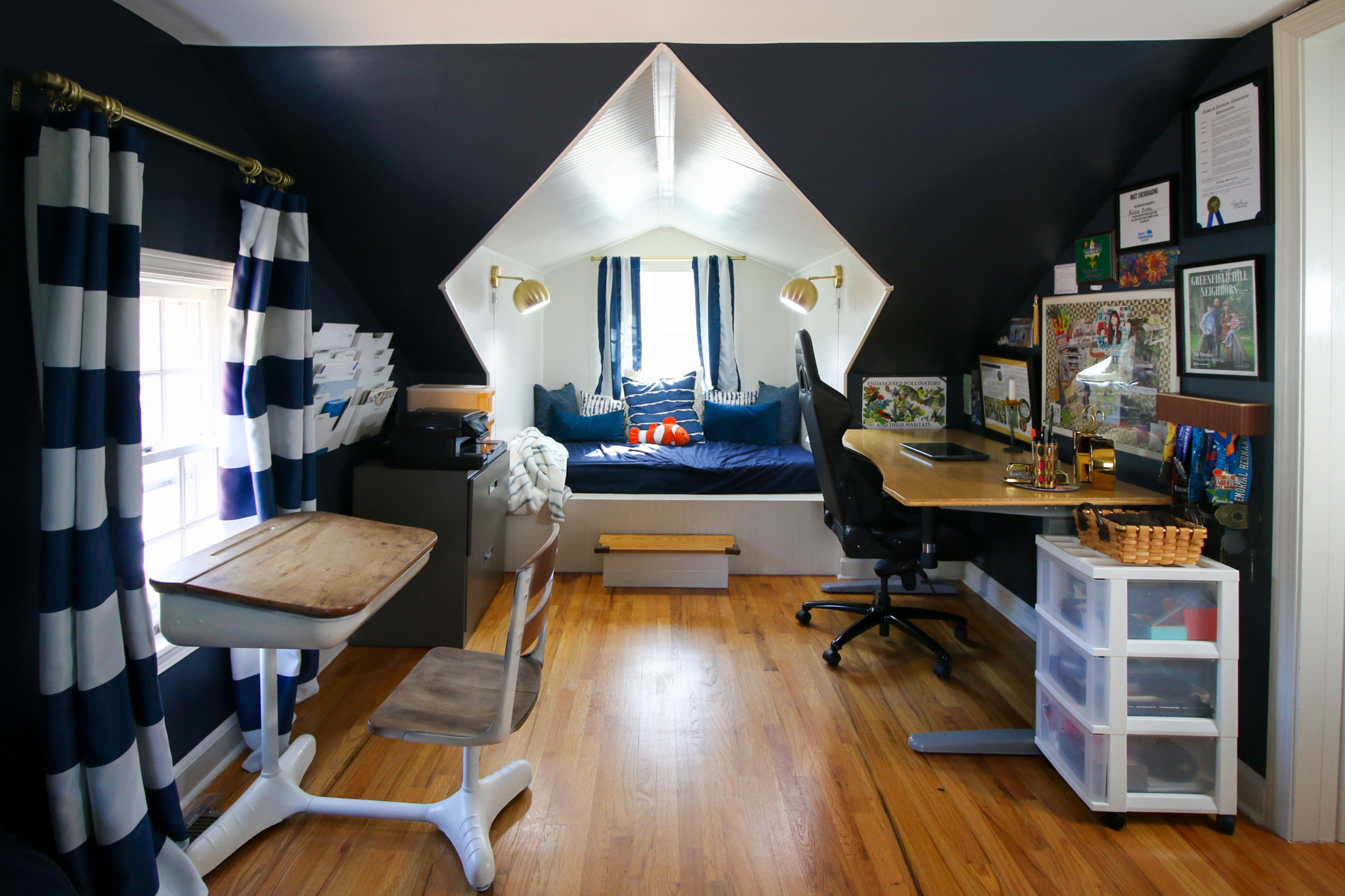
Last week I devoured Cal Newport’s latest book, Slow Productivity: The Lost Art of Accomplishment Without Burnout.
Deep Work
For those of you unfamiliar with Cal Newport, he is an MIT-trained Computer Science professor at Georgetown University and a bestselling author. In Deep Work, he outlines how and why he shuns social media and espouses Digital Minimalism despite his expertise in computer science. He argues that spending ample time and focus on individual thought-work projects produces superior results that are increasingly rare and valuable. This ethos is one I have adopted.
I read Deep Work for the first time a few years ago, and, despite my lifelong ADHD diagnosis, I strengthened my ability to sit longer and focus on tasks for extended amounts of time. I learned through Deep Work and The Shallows by Nicholas Carr how my behaviors were exacerbating the symptoms of my neurodivergence. I was part of the problem.
I couldn’t have that. So I began incrementally and consistently growing my focus. Just like a muscle.
Slow Productivity
Newport’s latest book builds on the concept of Deep Work by encouraging readers to drop the hustle mentality that has been integral in our society. In lieu of working harder, grasping at any opportunity that presents itself, one could do less and lend themselves to the work styles to some of the greatest scientists in history–Copernicus, Galileo, Isaac Newton–all of whom created everlasting legacies through decades of thoughtful work.
There is a section in this latest book about where to work that will encourage deep work, including examples of how many great thinkers commit themselves to their work for longer intervals of time by creating outbuildings, huts and shanties for writing. Maya Angelou would rent hotel rooms to write. Steinbeck wrote on his docked fishing boat.
Why not Home?
The problem is that the home is filled with the familiar, and the familiar snares our attention, destabilizing the subtle neuronal dance required to think clearly.
Cal Newport, Slow Productivity
Our brain naturally makes associations, and if we’re able to peek over to the right of what we’re working on and see a laundry basket, we begin getting pulled into the direction of a task that suddenly feels more pressing than deep work.
My Writing Cabin
…and art studio is yet to be built, though I’ve been gazing off at its potential location in my yard for years. In the meantime, I’ve created an in-home space for deep work, separate from ropes of other responsibilities that may pull me in other directions.
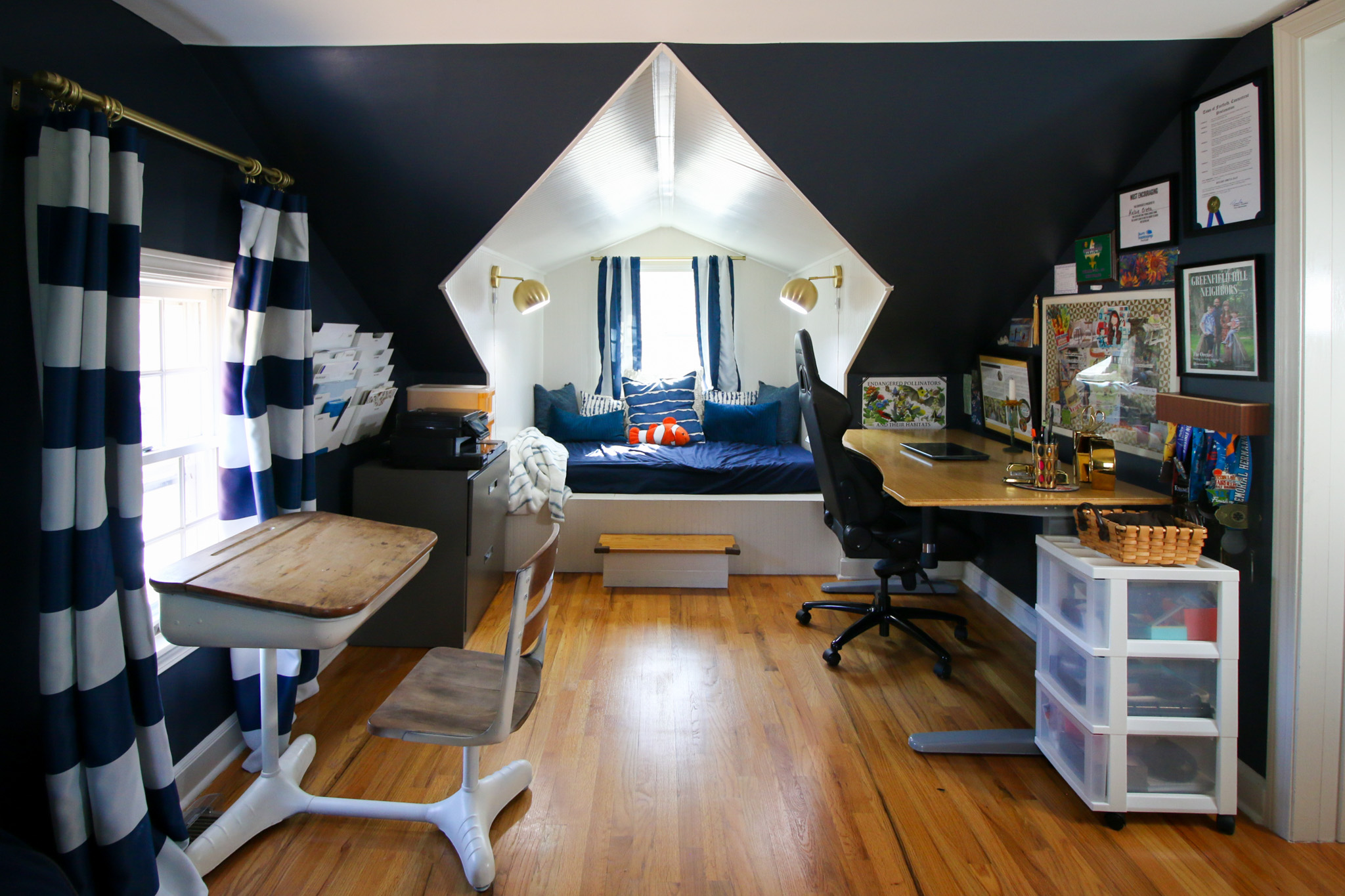
On Environments
When your goal is to improve your focus, or anything else for that matter, you don’t have depend on willpower to achieve your goals.
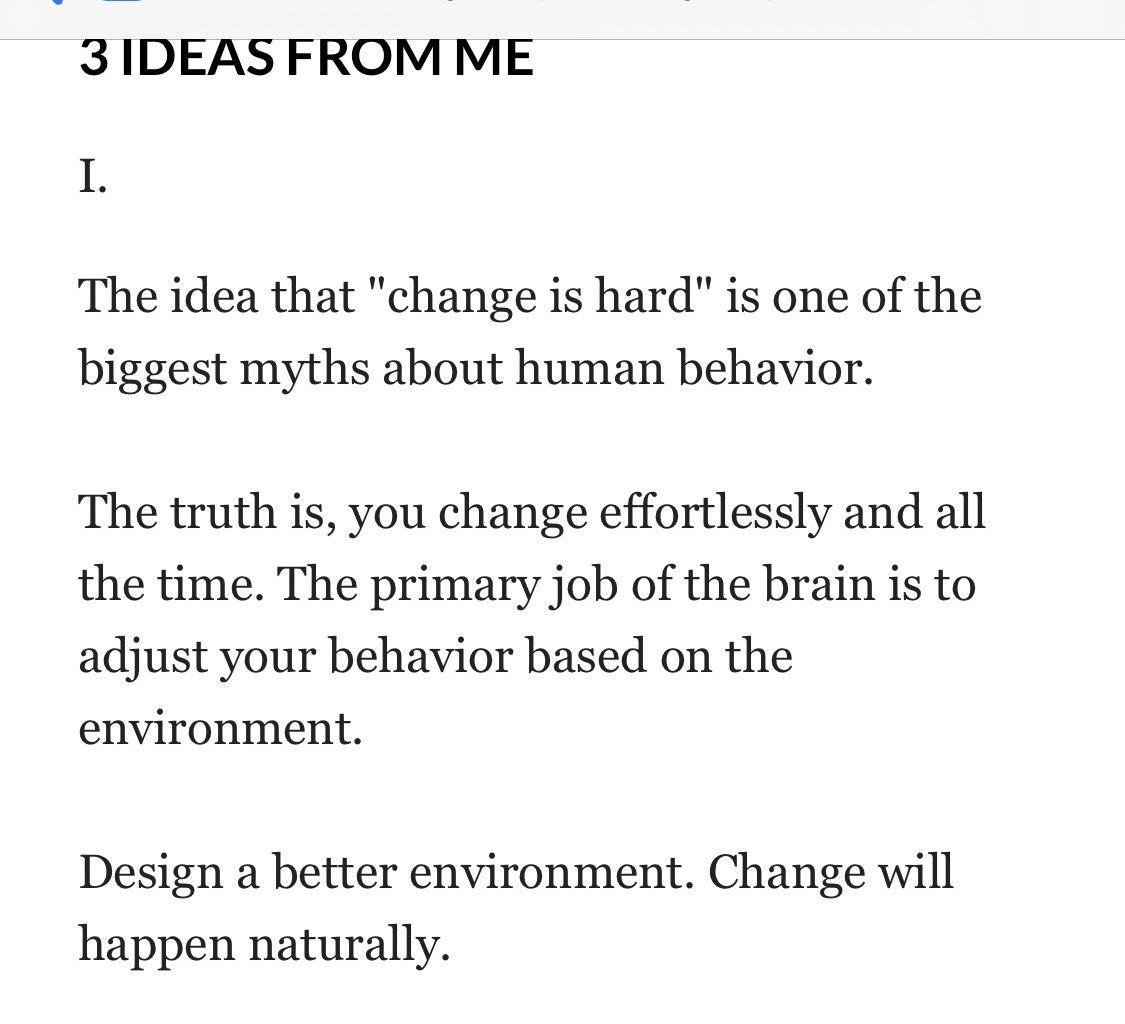
I’ve written before about Jim Bunch’s nine environments. Both when I shared about my closet makeover and when I wrote about my magical mornings in their infancy.
“Imagine for a moment that everything around you is an environment. Your phone is an environment. Your desk is an environment. Your body is an environment and so is your mind. Now you have to ask yourself: how do those environments impact you? And the simple version is this: they’re either inspiring you or expiring you.” -Jim Bunch
There’s a reason this is my most referred to episode of the only podcast I’ll listen to: it iterates clearly and succinctly what I’ve known in my bones for a lifetime. Where I am affects who I am.
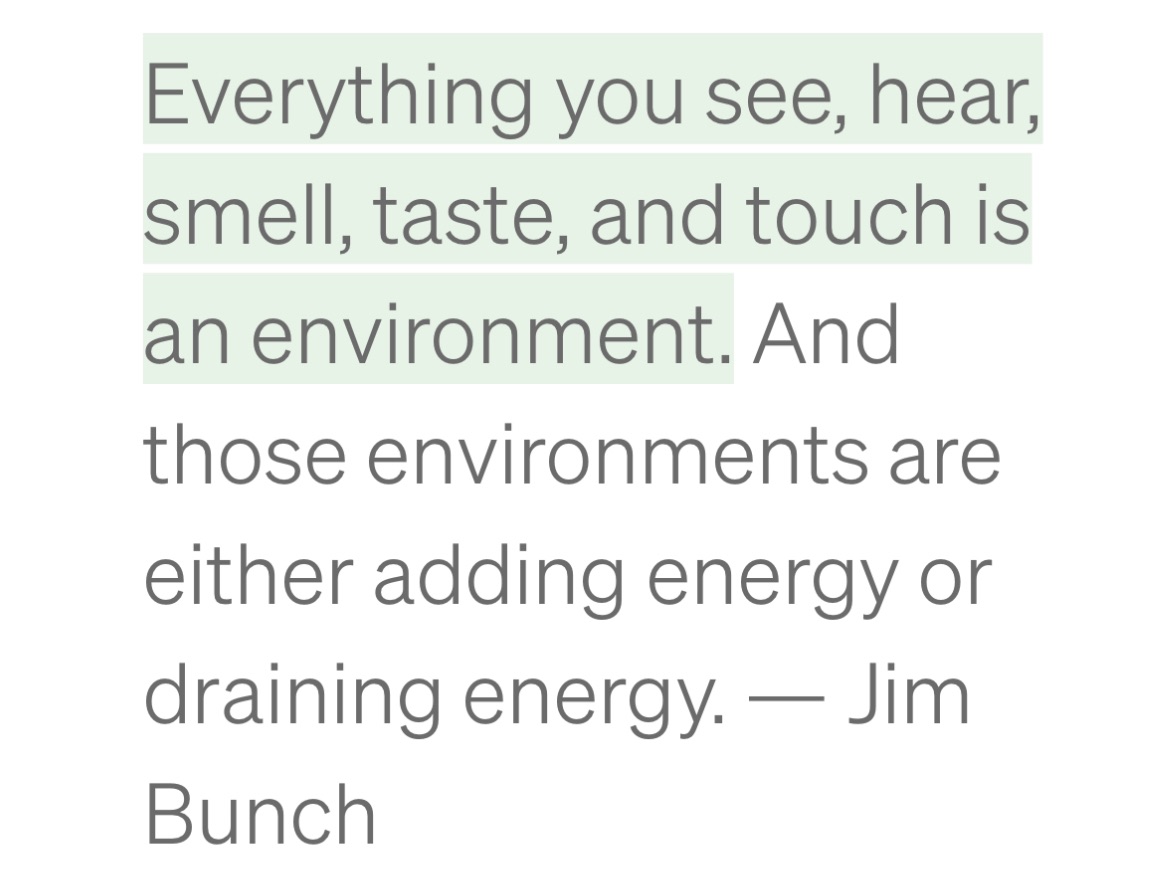
Messy Desk No More!
Messy is my default. I’m learning to stay organized, bit by bit, one space and one habit at a time. It was less than a year ago when I excavated my desk, hung art on the wall, and practiced mis en place when cooking up creative projects on my computer, journal, or planner.

I know folks like to espouse the idea that geniuses have messy desks. Correlation doesn’t imply causation & I’m trying to improve my quality of life & efficiency of work.
[Cleanliness and order] make us feel like there’s a sense of harmony in our surroundings. That we can be free to focus on other things. Because our brains don’t have to be so vigilant for something that might pop out of the clutter at us.
Ingrid Fetell Lee
Where’s all the paperwork?
Honestly, the most recent stuff is in a bag on the ground. It’ll get filed in the filing cabinet, but the interim holding place doesn’t need to be in my face or my space.
Wall Art
Creative work is often wrought with self doubt. When you’re making something out of nothing, it can feel like an extension of the self. What if no one likes my writing? Would that mean they don’t like me? This fear of social shunning can ignite lizard parts of the brain that deactivate creativity.
The deterrent for that? A display of accomplishments.

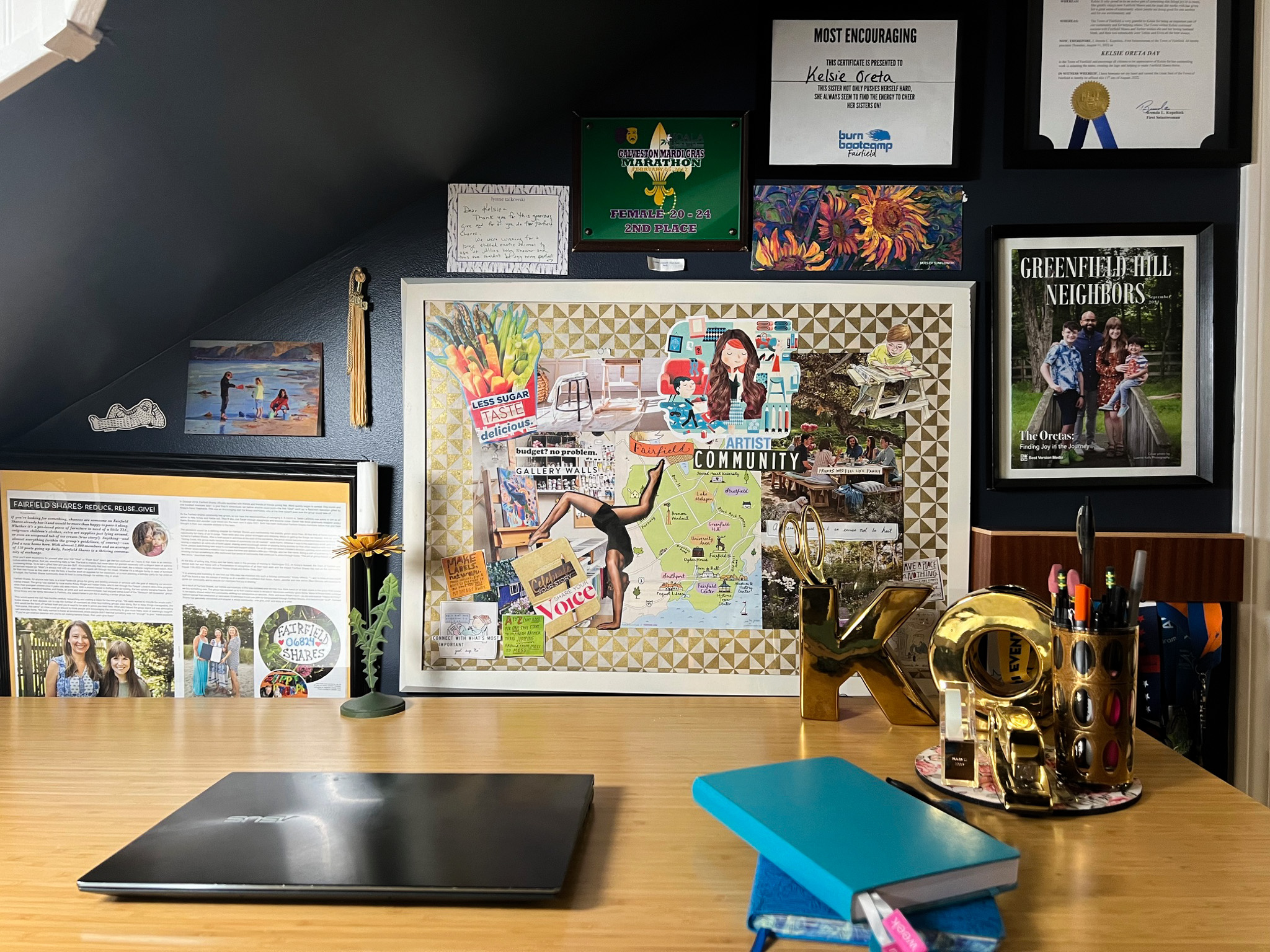
Who I’ve Been
I framed articles from the times I was written up in local magazines. There’s a pinned reminder from when I graduated college despite being a teen mom. A sticker from when an accomplished (re: famous, big brand collabs) graffiti artist told my teen and I: “You guys are cool.” A superlative for being the most encouraging from my old gym. My bajillion race medals from that stage in my life.
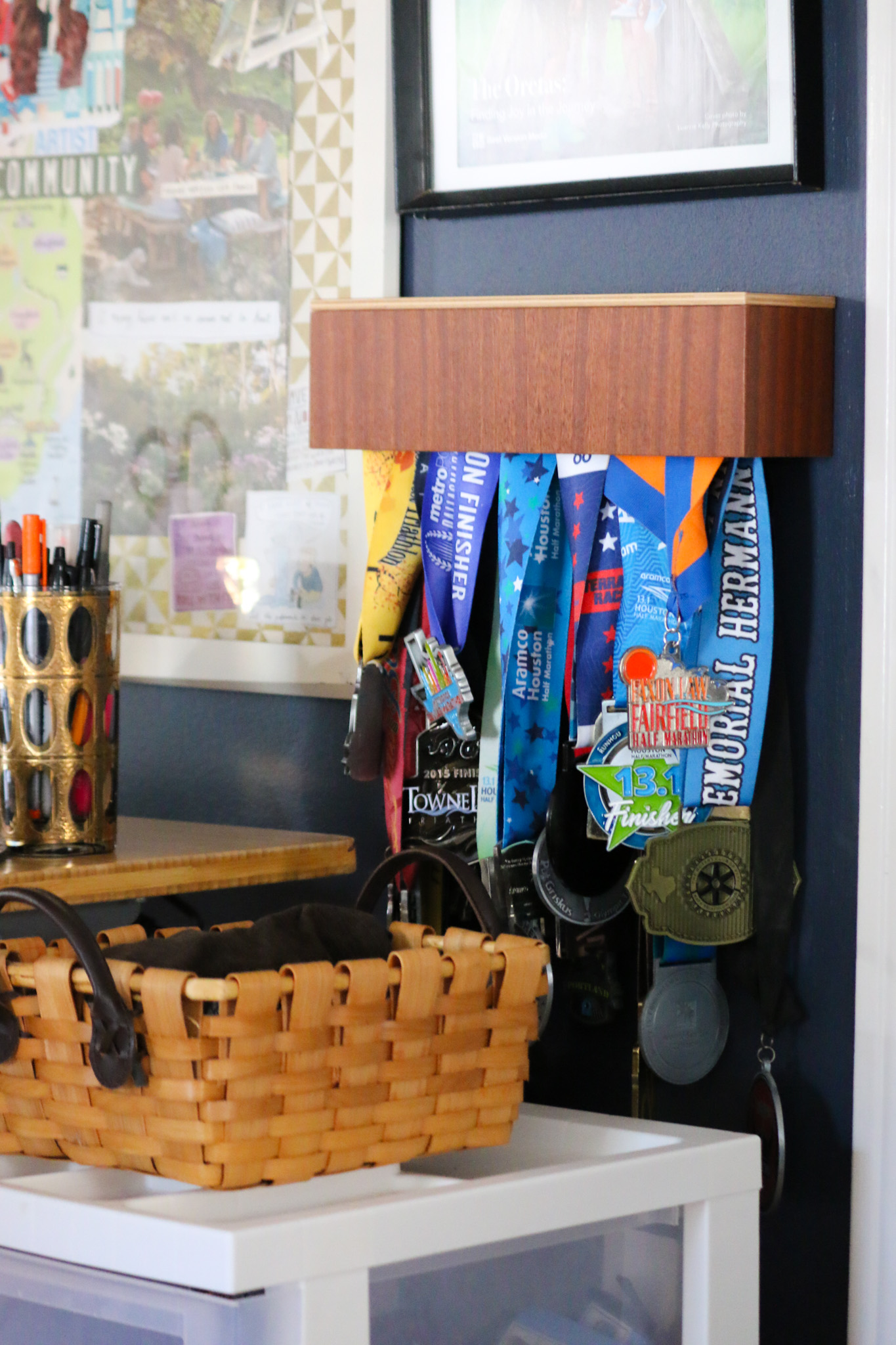
That time my town dedicated a day in my honor.
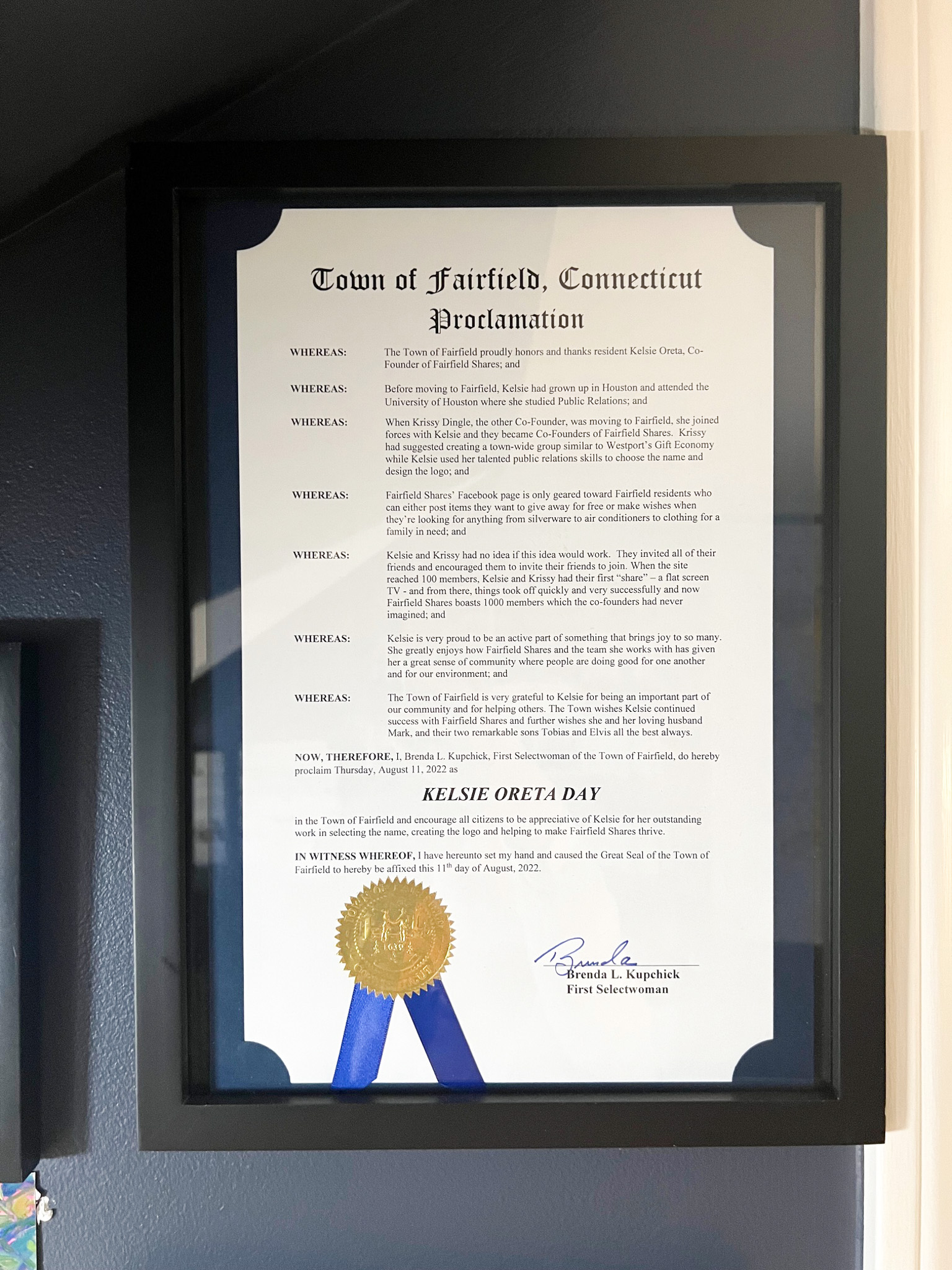
I use these to ground myself. As a reminder: look what you’ve already done. This is who you are. Keep going.
Who I am
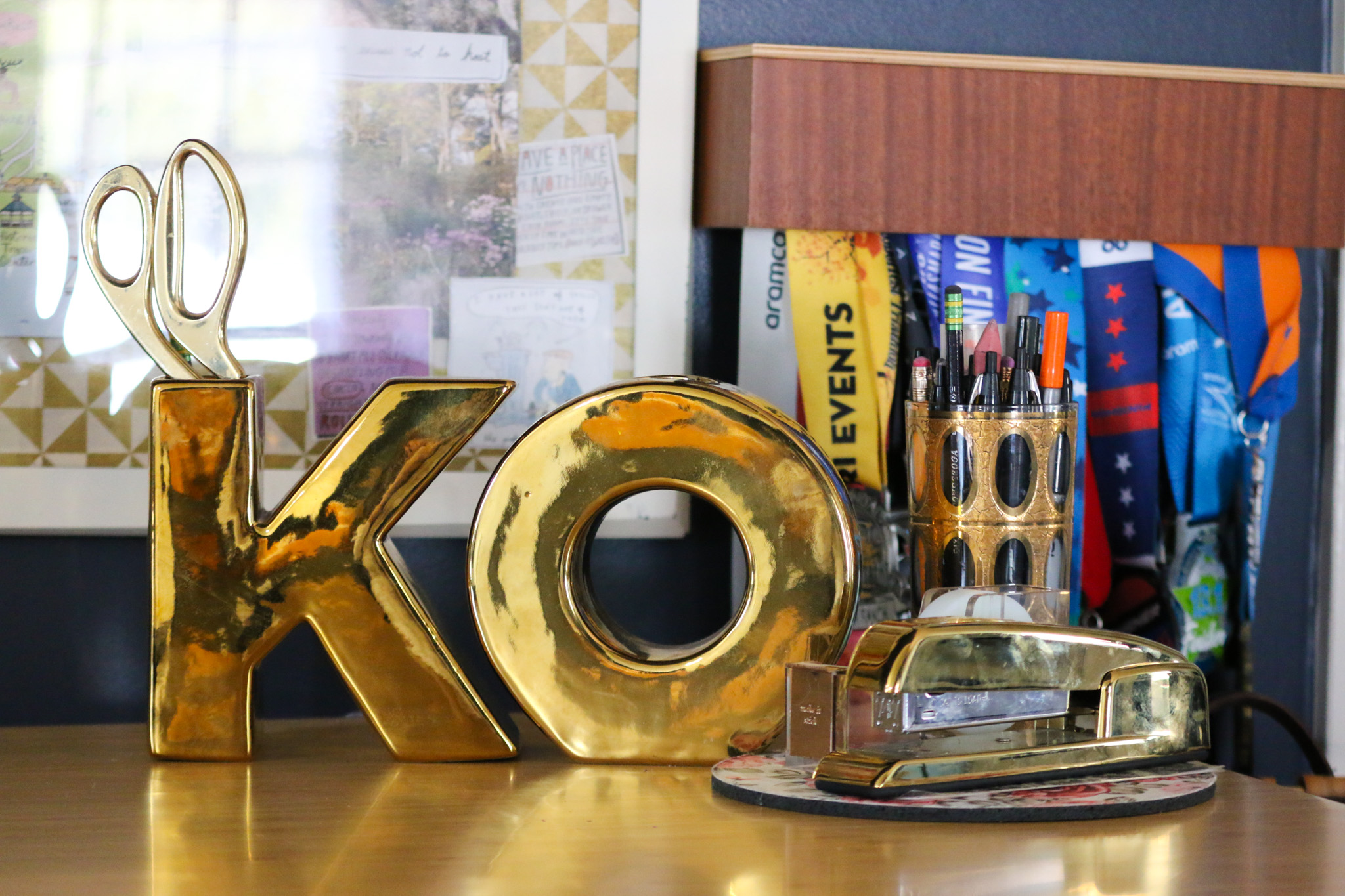
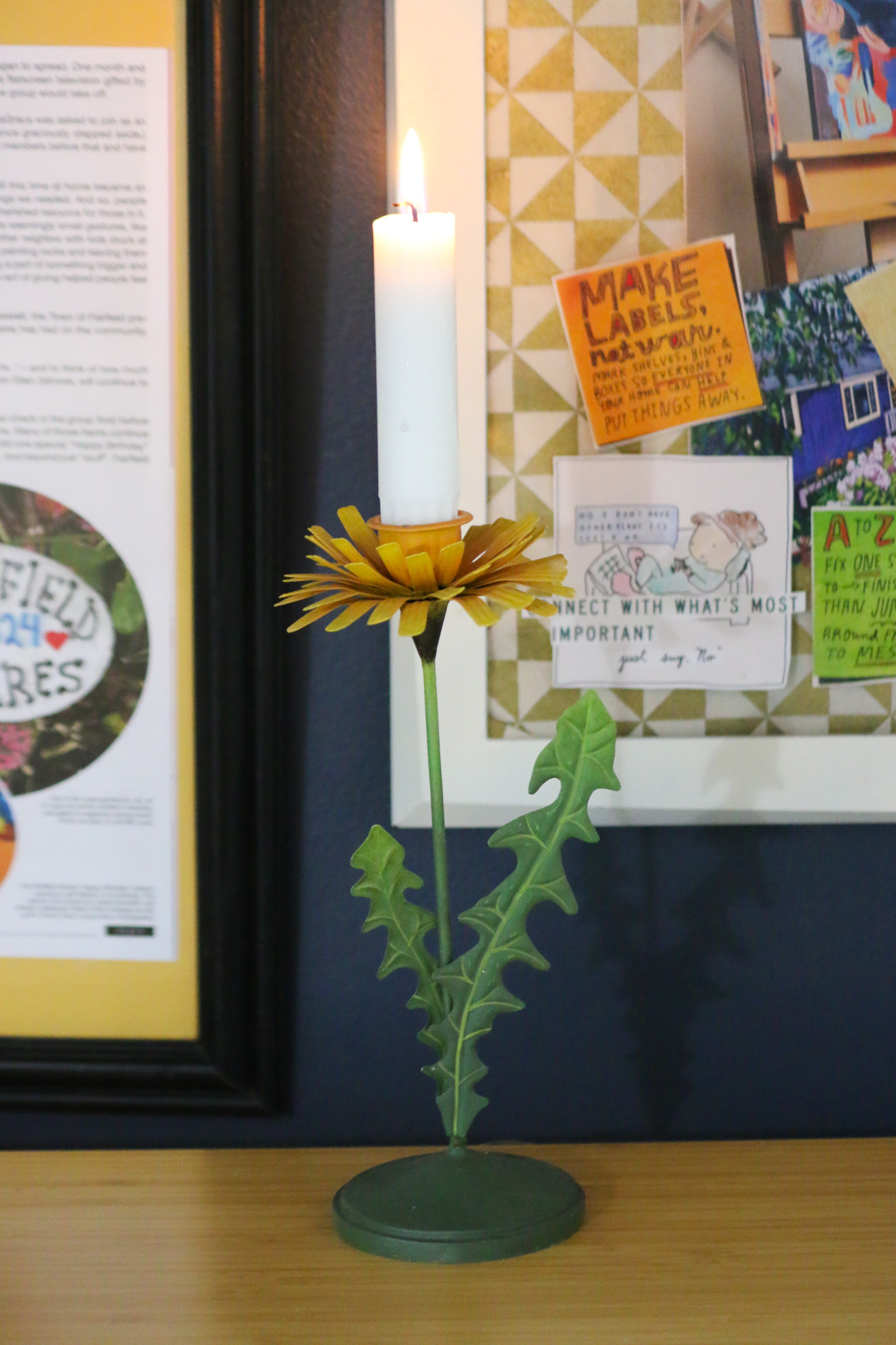
Who I’m becoming
There’s nods to my past as well as my future. Another item on display is a vision board I created in January of 2022.
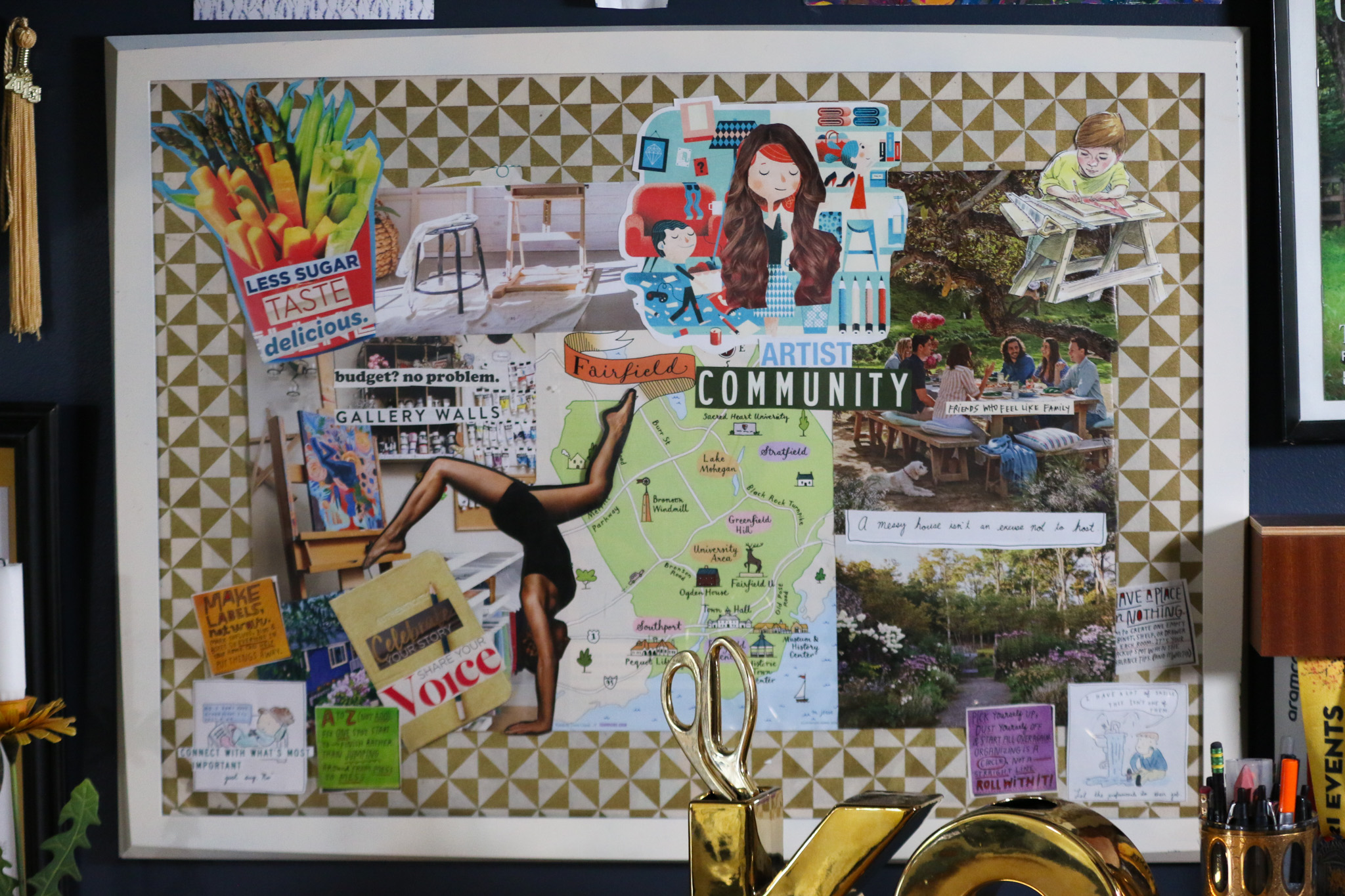
My intentions continue to be: spend more time in front of the easel, build local community, host more guests, write, organize, and have great hair while my kids do chores (hah!) as displayed on this vision board.
There are also a few prints from artists, including Erin Hanson, my favorite artist, as I aspire to be prolific in painting as well as writing.
Rest
Great work requires rest. I’m sure you know this by now. You can’t sprint forever, and burnout can only be avoided by using intervals of work and rest.
Much like how studying before sleep helps retain information better, rest is conducive to better work. Luckily, I have a space for that right next to my desk.
One of the features that drew us to this house is this dormer that’s just big enough to fit a small full sized mattress. Let’s take a moment to reminisce on what it looked like back then:
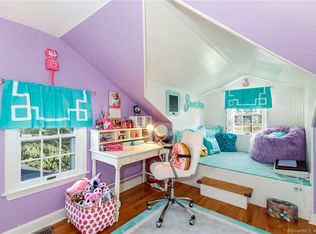
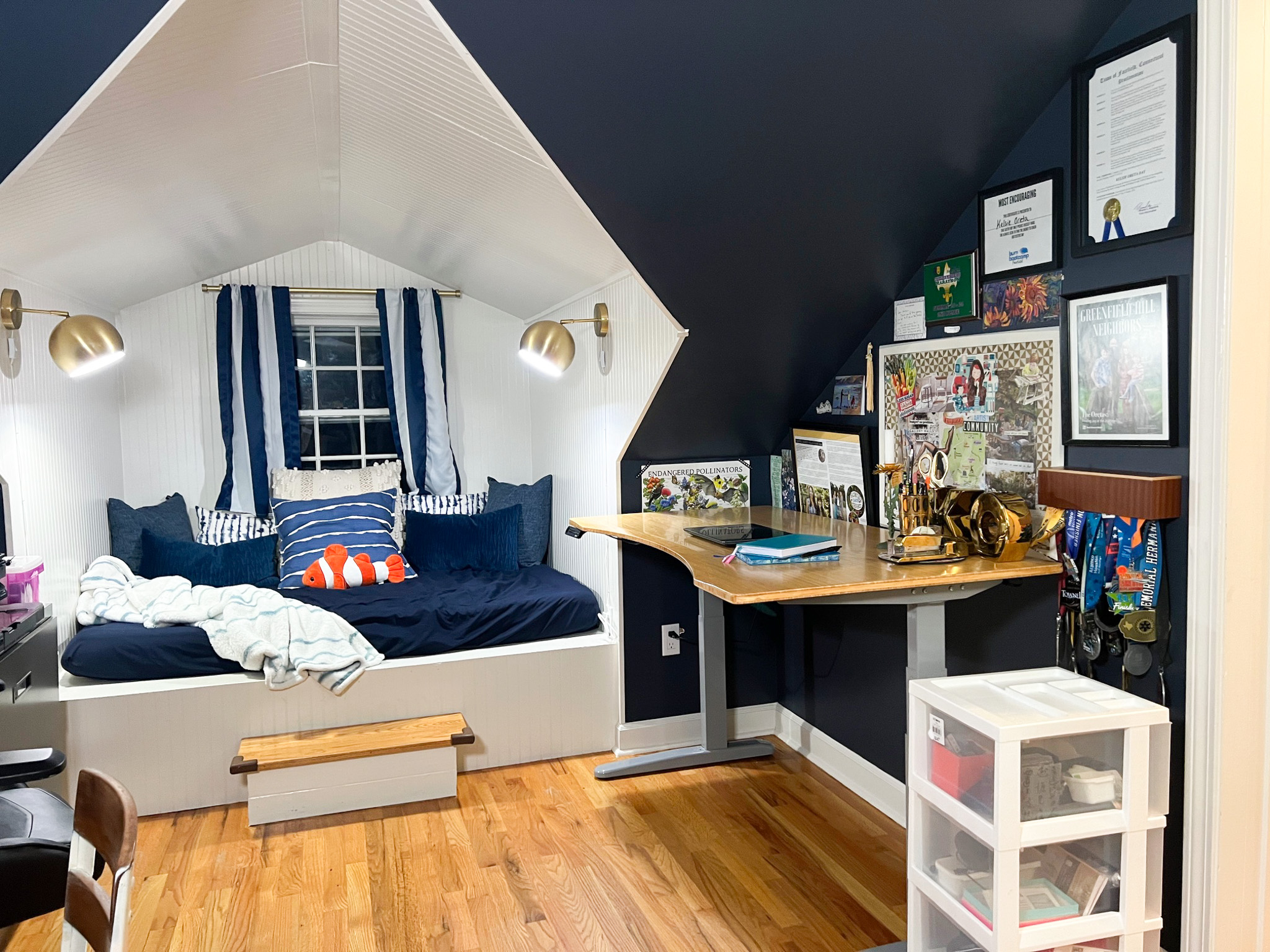
Last week, I installed those light fixtures. You may remember my post from two weeks ago about those DIY curtains from fabric scraps, too.
Because this isn’t the bed I use for sleep or sex, I don’t have associations with other things to distract me. I’ll get tired from the mental work, lay down without passing any laundry baskets or the like, and stand back up at my desk.
Deep Work
Now that I have a space conducive to deep work, there is less friction between my writing and I. I’m able to be more intentional and build the habits required to achieve my goals.
[…] create. Though frequency of publishing is a metric that is controlled by me only, I learned through Slow Productivity not to emphasize quantity over quality. I felt I was beginning to do so when I was writing a lot of […]
[…] activities. But when I sat in front of my computer, queued my writing playlist and settled in to my writing nook, my phone began to […]
[…] creativity, I make creative tasks more simple to do by reducing friction. Examples include having a dedicated space for writing, organizing and prioritizing creative endeavors, and tracking progress with habits in […]
[…] myself into one of Pavlov’s dogs through intentional playlists for specific activities. I use the power of environment to reduce friction for activities I want to influence myself to do more and to slow me down from […]
[…] The same tasks that can lead to burnout can feel enriching with the right time management, systems, environment, community, and balanced cycles of […]
[…] I mentioned this before in my office space post […]
[…] We live in such a hyperconnected world. It’s filled with over communication and more information than we can manage to turn into knowledge if we don’t slow down. […]